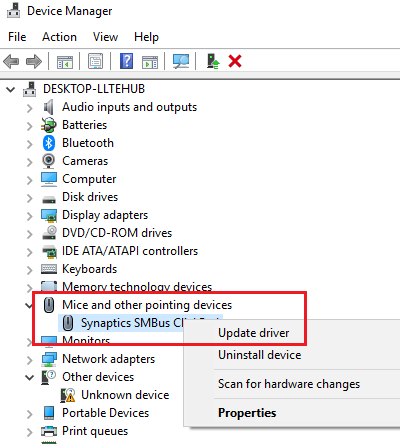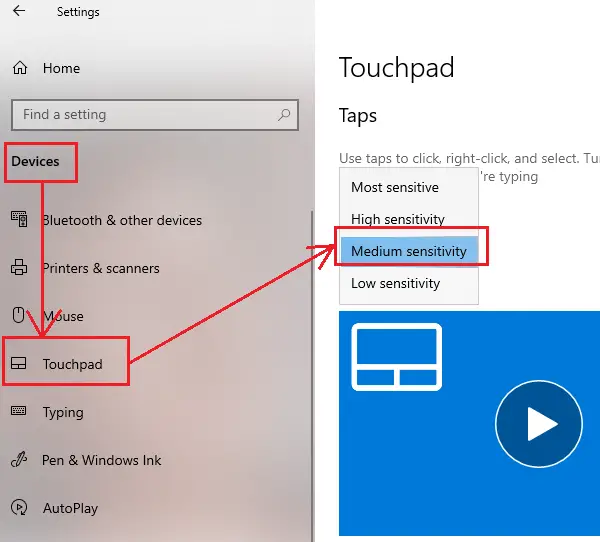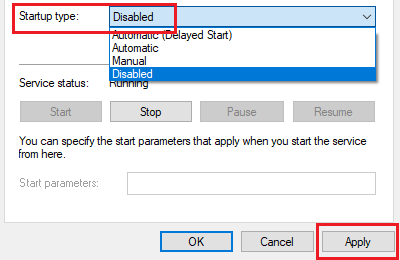A laptop’s touchpad not working could be a difficult situation. You would lose control of your system since no modern computer can function adequately without a pointing device. The issue could be with both the hardware and the software of the Windows 10 device. However, the problem is pretty standard, yet the touchpad’s hardware could rarely have gone wrong. Instead, for most users, simply switching ON the touchpad resolved the problem.
Laptop Touchpad is locked, disabled, gets stuck,scroll not working
The most common causes for the touchpad getting stuck or not working are as follows:
- The touchpad’s switch on the keyboard might be switched OFF.
- The touchpad’s drivers might be obsolete.
- The settings of the touchpad might have changed.
Please connect an external mouse to your system as a pointer while your touchpad is non-functional. Then try the following solutions sequentially to resolve the problem:
- Check the physical switch for the touchpad
- Run the Hardware and Devices troubleshooter
- Update the touchpad drivers
- Check the touchpad settings
- Check BIOS settings
- Disable Tablet PC Input Service
1] Check the physical switch for the touchpad
Most laptop keyboards have a physical toggle key to turn the touchpad ON/OFF. I am using a Sony Vaio system, and the function key associated with the touchpad is F1.
Press the Fn key and the function key associated with the touchpad once to switch it ON.
TIP: Windows stuck in Tablet Mode?
2] Run the Hardware and Devices troubleshooter

The Hardware and Devices Troubleshooter helps check common problems preventing hardware components from functioning correctly. It would be wise to run it before proceeding with other solutions.
Click the Start button to Settings > Updates and Security > Troubleshoot. On Windows 11, go to System > Troubleshoot > Other troubleshooters or use the GetHelp App.
Select the Hardware and Devices troubleshooter from the list and run it.
Restart the system.
Read: Mouse pointer or cursor disappears on Windows.
3] Update the touchpad drivers

The touchpad drivers help in the communication between the touchpad hardware and software. If the drivers are not updated for a long time, they might cease to work as desired. In such a situation, update them as follows:
Press Win+R to open the Run window and type the command devmgmt.msc. Press Enter to open the Device Manager.
In the Device Manager, expand Mice and other pointing devices. Right-click on the touchpad driver and select Update driver.
You could also consider downloading the drivers from the manufacturer’s website and installing them.
4] Check the touchpad settings

Laptops of different brands have different settings for the touchpad. My system (Sony Vaio) has no option to disable the touchpad. However, its sensitivity could be changed.
Click on the Start button and go to Settings > Devices > Touchpad.
Change the Touchpad sensitivity to Medium sensitivity from the drop-down menu. Restart the system.
More tips: TouchPad is not working on Windows.
5] Check BIOS settings
At times, the internal pointing device (in this case, the touchpad) could be disabled from the BiOS itself. In such a case, restart your system in BiOS mode and modify the settings accordingly.
Entering the BIOS mode is a different procedure for different systems. Usually, you would need to press the F8, F12, DEL, ESC, etc. buttons as soon as the system reboots.
In the BIOS menu, navigate to the Advanced tab. Verify that the status of the Internal Pointing Device should be [Enabled].
If not, change the status to [Enabled].
Read: Touchpad getting disabled automatically.
6] Disable Tablet PC Input Service (for Windows 7)
While Tablet PC Input doesn’t come as a service for later versions of Windows, if you are using Windows 7, you could disable the service as follows:
In the Windows 7 Search bar, type services.msc and press Enter.
In the list of services arranged alphabetically, scroll down to Tablet PC Input Service. Right-click on it and select Properties.
Change the Startup type to Disabled. Click on Apply and then on OK to save the settings.

Restart the system and check if it fixes the problem with the touchpad.
Posts that may help you:
- How to Reset Touchpad settings to default in Windows 10
- How to disable Laptop Touchpad.
How do I enable the touchpad on my HP laptop?
To enable the touchpad on an HP laptop, check for a physical switch or function key combination dedicated to the touchpad’s activation. In Windows, access the Touchpad section in the Settings app to toggle it on. Alternatively, use the Device Manager to enable the touchpad if needed. The specific steps may vary based on the laptop model and operating system.
Why is my laptop touchpad locked?
The touchpad on your laptop could be locked for various reasons, such as a physical switch or key combination, unintended keystroke, software configuration, external mouse connection, driver problems, gesture settings, battery-saving mode, interference from third-party software, or hardware malfunction. Examine these factors and make necessary adjustments to reactivate the touchpad.
Leave a Reply